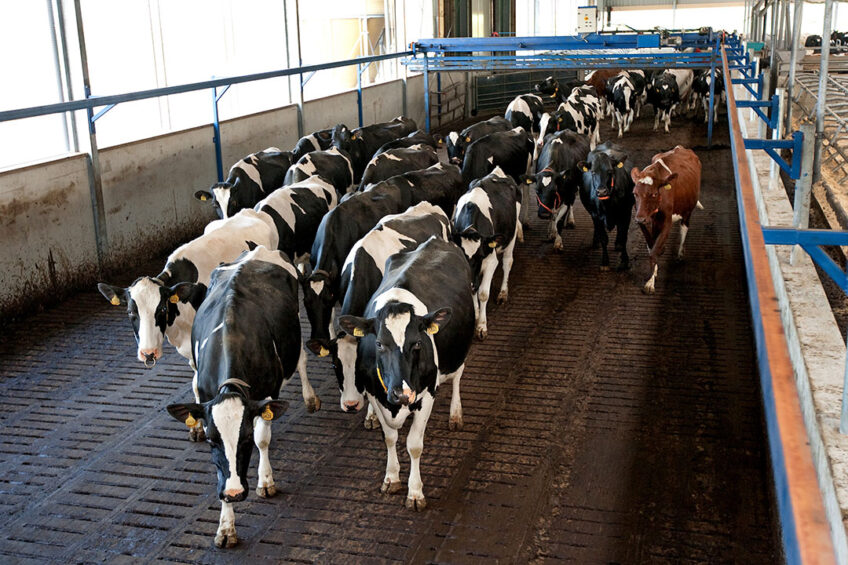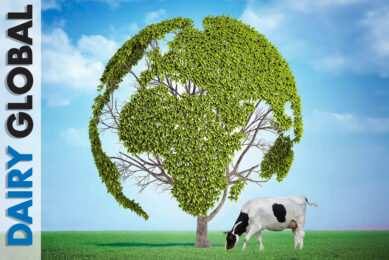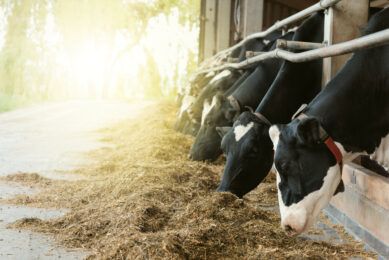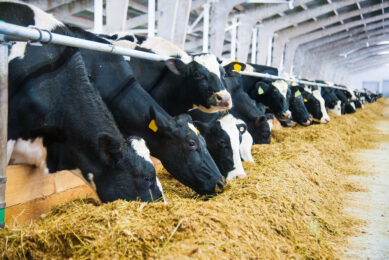Dairy herd improvements to promote cow welfare

Animal welfare concerns are on the rise globally. While dairy cow welfare remains a major topic for researchers in many fields, here is a look at exploring dairy herd improvements (DHI) further.
Welfare importance
Welfare is related to cow health status and their ability to cope with external and internal environmental and farming conditions, thus cow behavioural response to several circumstances including illnesses and nutritional level. Welfare remains a complex situation and good animal welfare is linked to cows that are in good condition, healthy, comfortable, well-nourished, safe, and able to express their innate behaviour while not suffering from negative states including pain, fear, and distress. Long-term genetic selection for high-yielding cows has impacted welfare, more likely because cows with increased productivity and calving intervals are more susceptible to metabolic diseases, mastitis, lameness, and negative nutrient supply coming from increased energy, protein and dynamic nutrients (vitamins and trace element nutrition) demand. The benefits of improving farm animal welfare can maintain tangible gains in overall productivity as well as competitive advantages and market premiums for end products.

Enhancing welfare of dairy cows
The welfare status of an animal could be related to its behaviour. The concept of animal welfare can be broken down into 5 basic freedoms: freedom from pain – injury, diseases, physical, and thermal discomfort, fear and distress as well as freedom from hunger, thirst, and malnutrition. There is no doubt that the complexities of farm design, farm management, nutritional and animal health status are fundamentally key in promoting animal welfare in the herd. Especially with dry cows, good management levels can minimise and, in most cases, avoid metabolic diseases while promoting animal well-being in the following lactation phase. Nowadays, metabolic diseases maintain the highest financial risk for the dairy enterprise from multiple angles.
Early signs to detect SARA in the herd
Subacute ruminal acidosis (SARA) remains the most important digestive disorder (from a financial perspective) caused by high accumulation of volatile fatty acids (VFA) in the rumen. It is mainly observed in high yielding dairy cows in early and mid-lactation. Here are 4 ways to detect SARA early on. Read more…
2 main consideration points in dairy herd improvements:
1. Farm design and management practices
The farm should have adequate space for all animals according to their needs and physical size, maintaining a safe environment including non-slippery walking surfaces and no sharp edges. Farm areas should also be well-ventilated with sufficient sunlight and lying areas should have dry and comfortable bedding. Additional materials used for bedding must be free of toxic compounds and must absorb moisture. For cubicle housing systems, at least one cubicle per cow must be available designed according to animal breed and size. Separation or isolation must occur on a short term and due to cow illness or injury. Calves until 8 weeks of age should be kept individually in single pens according to their height with unlimited access to feed and a clean water source.
Management practices including painful operations can cause significant welfare issues as they are associated with high levels of stress and abnormal behaviours of cows. Operations like tethering, muzzling and tail docking should not be applicable at any time. Castration is also considered as a painful operation and should be carried out only by vet practitioners and under anaesthesia. Another management practice that can potentially improve animal well-being is proper grouping based on animal productivity. Not only will this help the farm manager take correct decisions regarding livestock, but cows will also be able to express their positive behaviour, minimise stress, and avoid chronic fear mainly due to antagonist phenomena because of hierarchy.
2. Farm nutrition and animal health status
All animals should have free access to a sustainable water supply and to palatable feed ration based on their nutritional requirements, free from anti-nutritional factors. Often neglected, balanced dry cow nutrition putting emphasis on key individual farm aspects (type of feeding – TMR/PMR, grouping, ingredients use etc.), from experience, can secure a stable and profitable upcoming lactation for the cow. That is why technical visits from the farm nutritionist should be applicable on a monthly basis cross checking implementation of farm rations and of course health and welfare of the cows.
How to maximise dairy farm profits in warm countries
Lactating cows are forced to overcome thermal stress while maintaining their high productivity, especially in warmer European countries. Find out more…
Farm records should be considered as the highest priority for farm manager enabling the right decision at the right time, creating and developing a correct financial result for the farm. Such records can include clinical lameness (non-routine livestock trimmings treated with antibiotics), clinical mastitis (treated with antibiotics), mortality (including stillbirth), morbidity, and culling. Animals with serious health problems should be isolated and treated promptly. Animal welfare status can further help minimise the use of antibiotics in the herd. Animal welfare from that angle can significantly induce less usage of antimicrobials in the herd.
To conclude, new industry farming systems and equipment designs should take in high consideration the basics of animal welfare by limiting sources of stress and pain for cows, ensuring the the 5 freedoms, but most importantly favour positive behavioural experience for animals via improving their life cycle quality in the herd. It is also of utmost importance for all of us active in the farming industry to train dairy managers, promote and apply such principles on a farm level and in daily practices.
References available on request.
Join 13,000+ subscribers
Subscribe to our newsletter to stay updated about all the need-to-know content in the dairy sector, two times a week.










